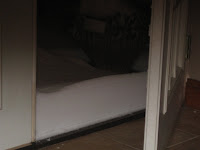The Court of Appeals recently issued key a Labor Law 240(1) decision clarifying the meaning of the statute. In Runner v. New York Stock Exchange, the plaintiff injured his hands when he was asked to lower a large reel down a staircase using a make-shift hoist. Rather than loading the reel onto an actual hoist or pulley, a rope was tied around it, which was strung over a wooden rail, and the plaintiff was asked to hold one end of the rope to act as a counterweight. The matter went to trial in a Federal District Court, went to Second Circuit, and the Second Circuit certified the legal issue to the New York State Court of Appeals.
Defendants argued that, for Labor Law 240(1) to be applicable, "gravity must operate directly upon either the plaintiff or upon an object falling." The Court of Appeals responded, however, that ""the single decisive question is whether plaintiff’s injuries were the direct consequence of a failure to provide adequate protection against a risk arising from a physically significant elevation differential." Labor Law 240(1) was applicable because "a pulley or hoist should have been used."
The defense bar constantly tries to limit the scope of this stutute. It is a broad statute, covering gravity-related risks, and requires owners and contractors to provide safety devices to guard against that risk The Court of Appeals did not express any new law, or new interpretion, but, rather merely once again rejected an attempt to create a bright-line rule where none was necessary. Although the "de minimus height differential" argument is sometimes used as a manner of expressing that a particular circumstance did not present a gravity-related risk, at no point have New York's Courts expressed any sort of minimum height differential. In fact, "falling object" cases have been upheld where the fall was, essentially, horizontal.
Over at the New York Civil Law Blog, Matt Lerner points out that the Court focused on the nature of the object being hoisted or secured. The nature of the object is not a new consideration -- notably, in cases such as Outar v. City of New York, the Court has previously commented on objects being the type of object that requires securing -- but it is an under-appreciated factor that the Court makes plain is very relevant to the Labor Law 240(1) inquiry.
Eric Turkewitz at the New York Personal Injury Law Blog notes that this decision is part of a trend away from defense oriented decisions. A lot of it has to do with which cases the Court of Appeals chooses to hear, but there has been a trend. Looking at the leading Court of Appeals decisions over the last five years, six of eight -- Runner, Quattrocchi(2008), Sanatass (2008), Broggy (2005), Outar (2005), and Stejskal (2004) -- have been Plaintiff friendly; in the five years prior to that, however, only two of five were found in the plaintiff's favor.
Eric Turkewitz at the New York Personal Injury Law Blog notes that this decision is part of a trend away from defense oriented decisions. A lot of it has to do with which cases the Court of Appeals chooses to hear, but there has been a trend. Looking at the leading Court of Appeals decisions over the last five years, six of eight -- Runner, Quattrocchi(2008), Sanatass (2008), Broggy (2005), Outar (2005), and Stejskal (2004) -- have been Plaintiff friendly; in the five years prior to that, however, only two of five were found in the plaintiff's favor.
RELATED POSTS
- Construction Accident Trial on the One- or Two-Family Dwelling Issue
- Construction Accident Attorney[Violations Of The Industrial Code]
- Construction Accident Attorney [Falling Workers And Objects]
- One- Or Two- Family Dwelling Exception
- Out Of Possession Landlords Are Still Responsible For Construction Accidents
- Court Of Appeals Clarifies That Construction Safety Laws Apply To "Cleaning" Activities Even When Not Related To Construction
- Construction Accident Trial on the One- or Two-Family Dwelling Issue
- Construction Accident Attorney[Violations Of The Industrial Code]
- Construction Accident Attorney [Falling Workers And Objects]
- One- Or Two- Family Dwelling Exception
- Out Of Possession Landlords Are Still Responsible For Construction Accidents
- Court Of Appeals Clarifies That Construction Safety Laws Apply To "Cleaning" Activities Even When Not Related To Construction








 Disclaimer: Nothing on this law blog should be understood to constitute legal advice or establish an attorney-client relationship. To the extent anything on this site may be considered attorney advertising, take notice that prior results do not guarantee a similar outcome.
Disclaimer: Nothing on this law blog should be understood to constitute legal advice or establish an attorney-client relationship. To the extent anything on this site may be considered attorney advertising, take notice that prior results do not guarantee a similar outcome.